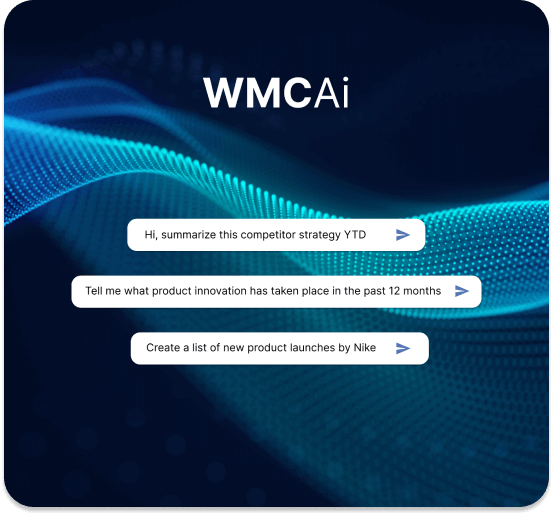Today more than ever, product managers find themselves facing a host of challenges and opportunities. With the rise of data-driven decision-making, the role of analytics tools in product management has become more important than ever.
As you read on, we’re going to explore the world of analytics tools tailored to the unique needs of product managers. We’ll be exploring the essential types and criteria for selecting the right tools.
We’ll also consider the role of competitive intelligence platforms and their ability to provide real-time insights that empower informed decisions.

Understanding Analytics Tools For Product Managers
Analytics tools are an essential part of modern product management. These software solutions are designed to gather, process, and present data. This allows product managers to gain valuable insights into their product’s performance and user behaviour. These tools enable data-driven decision-making.
Product managers now find themselves at the intersection of technology and user behaviour. Understanding the intricacies of analytics tools and how they fit into the product management landscape matters more than ever. These tools are designed to collect and analyse data, offering product managers insights into user behaviour, market trends and other critical information.
Such insights are vital when it comes to informed decision-making, which is a core element of effective product management.
The Key Types Of Analytics Tools
To understand analytics tools better, let’s explore some of the key types, each with its unique features and applications:
Web analytics tools
These tools focus on website and app performance, tracking user interactions and behaviours. Google Analytics is a prime example, offering in-depth insights into user demographics, page views, and conversion rates. The value of this tool can be seen by the fact that some 37.9 million websites use it.
Customer analytics tools
These tools delve into customer behaviour, helping product managers understand their users on a deeper level. They provide valuable information on user journeys, preferences, and pain points. This data can be crucial for product improvements.
Competitive intelligence platforms
Competitive intelligence platforms play a central role in this discussion. They provide real-time data on competitors, market trends, and customer preferences.
Criteria For Selecting The Right Analytics Tools
Selecting the right analytics tools is a critical decision for product managers. To make an informed choice, consider the following criteria:
1) Data accuracy
The reliability of the data provided by the tool is paramount. Ensure that the tool’s data sources and algorithms are trustworthy. One report shows how poor quality data costs businesses £12.9 million every year.
2) Usability
The tool should be user-friendly and offer an intuitive interface. Training requirements should be minimal, allowing the team to adapt quickly.
3) Integration capabilities
Compatibility with other tools in your tech stack is essential. The analytics tool should seamlessly integrate with your existing systems to avoid data silos.
4) Cost-effectiveness
Analyse the total cost of ownership, including initial setup, ongoing subscriptions and any hidden costs. Choose a tool that fits your budget without sacrificing essential features.
The Role Of Competitive Intelligence Platforms
Competitive intelligence platforms deserve special attention due to their pivotal role in analytics tools for product managers. These platforms provide real-time data on competitors, market trends and customer preferences, allowing product managers to:
Stay informed
Track your competitors’ activities, product releases, and market positioning in real time. This information helps you adapt swiftly to changing market dynamics.
Identify trends
Analyse market trends and customer preferences to tailor your product strategy. Understand what resonates with your target audience and align your offerings accordingly.
Make informed decisions
Data-driven decision-making becomes more valuable with up-to-the-minute information. Competitive intelligence platforms empower product managers to make timely and informed choices.
The benefits here go some way to explaining why 90% of Fortune 500 companies use CI to gain an advantage over their competitors.
The Advantages Of Using Analytics Tools
Incorporating analytics tools into your product management process offers several key advantages:
1) Deeper user satisfaction
Analytics tools for product managers offer an insight into the world of user behaviour. They allow you to dive deep into your users’ experiences, understand their pain points and uncover their preferences.
This newfound understanding goes beyond surface-level feedback and helps you tailor your product to meet their specific needs. When you prioritise user satisfaction, you create a loyal user base that not only stays with your product but also advocates for it, boosting your brand’s reputation and overall success.
2) Streamlined efficiency
The essence of data-driven decision-making lies in its ability to streamline your product management process. Instead of relying on guesswork or gut feelings, you base your decisions on concrete data. This data-driven approach ensures that your efforts are channelled towards what truly works, eliminating wasted resources on ineffective strategies or features.
It’s a cost-effective and time-efficient way to manage your product, as it empowers you to allocate resources wisely, prioritise the right features, and cut down on unnecessary development cycles.
3) Competitive edge
In a market characterised by cutthroat competition, having the right analytics tools can provide a significant competitive edge. By staying ahead of trends, understanding your users’ needs, and making data-driven adjustments, your product remains agile and responsive.
This agility is a powerful asset that allows you to outpace competitors and lead the pack. Analytics tools not only keep you in the race but position you as a frontrunner in the dynamic world of digital products.
4) Risk mitigation
Product managers often face the challenge of uncertainty. Analytics tools act as risk mitigators by providing insights that reduce guesswork. They allow you to identify and address potential issues before they become major problems. Through predictive analysis and trend tracking, you can foresee challenges and prepare accordingly, safeguarding your product’s success and reputation.
Integration & Implementation
To make the most of analytics tools, product managers need to seamlessly integrate them into their workflow. Here are some best practices for implementation:
Plan ahead: Before adopting any analytics tool, have a clear plan in place. Identify the key metrics you want to track and align the tool’s setup accordingly.
User adoption: Ensure that your team understands the tool’s functionality and benefits. Training and ongoing support may be necessary for successful user adoption.
Regular analysis: Consistently analyse the data provided by the tool and use it to inform your product management decisions. Regular reviews and adjustments are crucial for success.
Successful integration and implementation of analytics tools are key to their effectiveness. Planning ahead and defining your goals and metrics is essential.
Equally important is ensuring that your team is well-versed in using the tool and can fully harness its capabilities. Regular analysis and adjustments based on the data collected are critical to realising the full potential of these tools.
Concluding Thoughts
Today, product managers need to embrace the power of analytics tools to stay competitive and meet their users’ needs. Analytics tools, including competitive intelligence platforms, are vital for achieving success in the digital age.
They provide critical insights into user behaviour, product performance, and the competitive landscape, enabling data-driven decisions that can transform your product management process. In a world where real-time information is key, these tools are the keys to staying one step ahead of the competition and ensuring your product’s continued growth and success.








